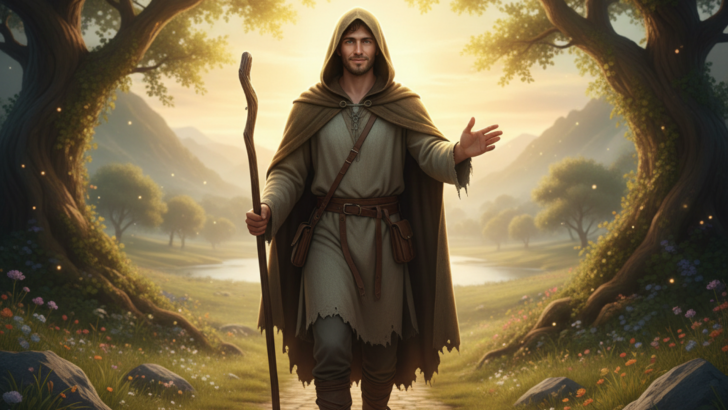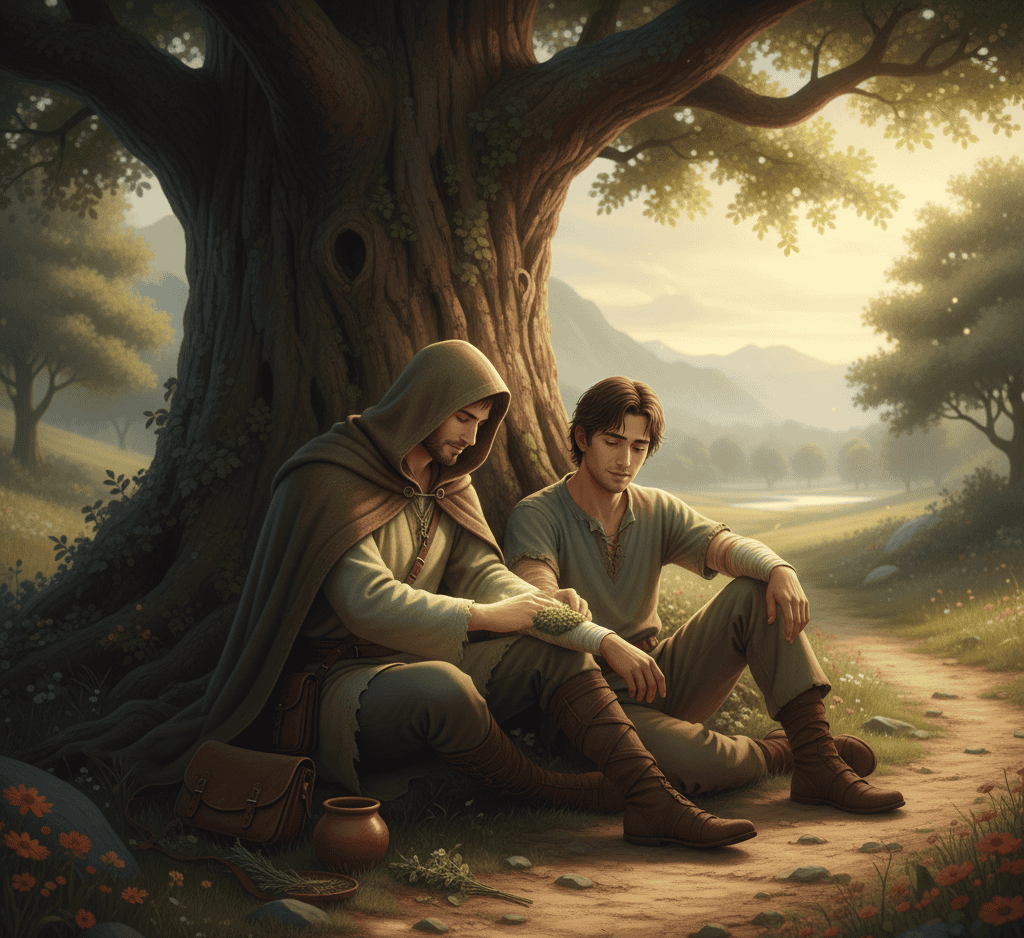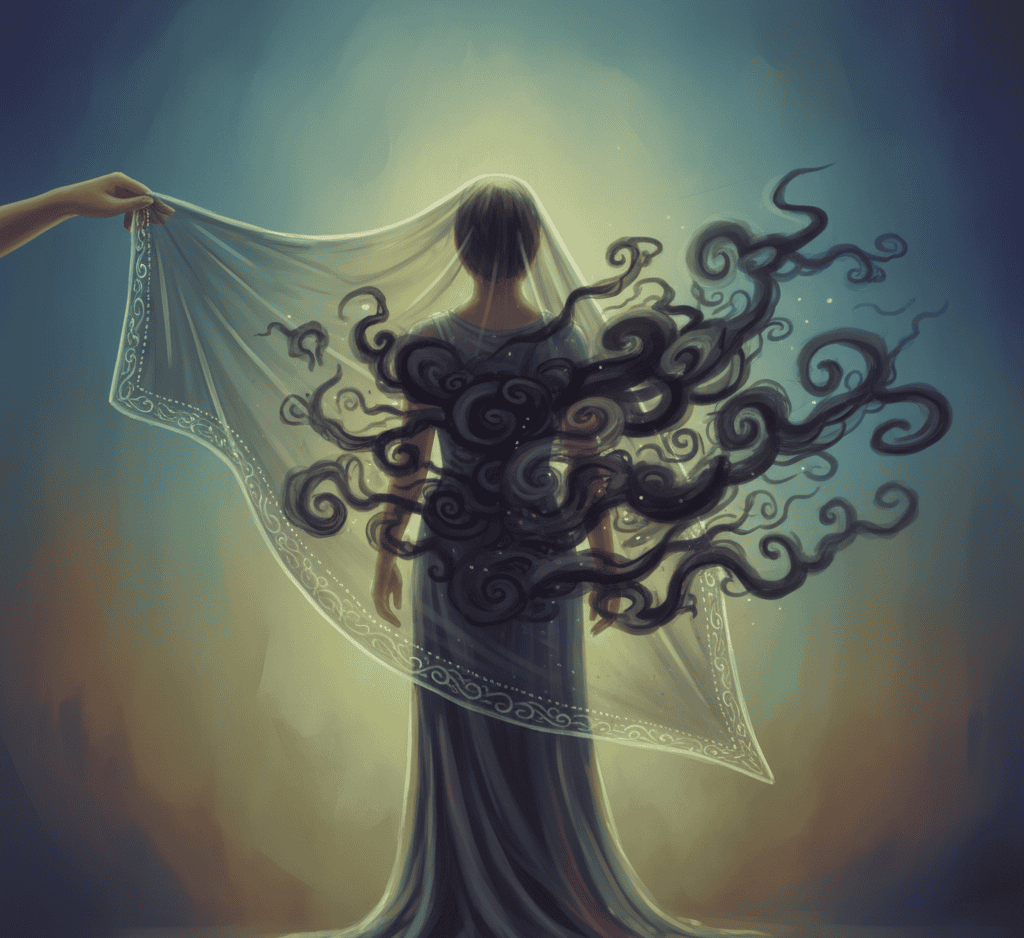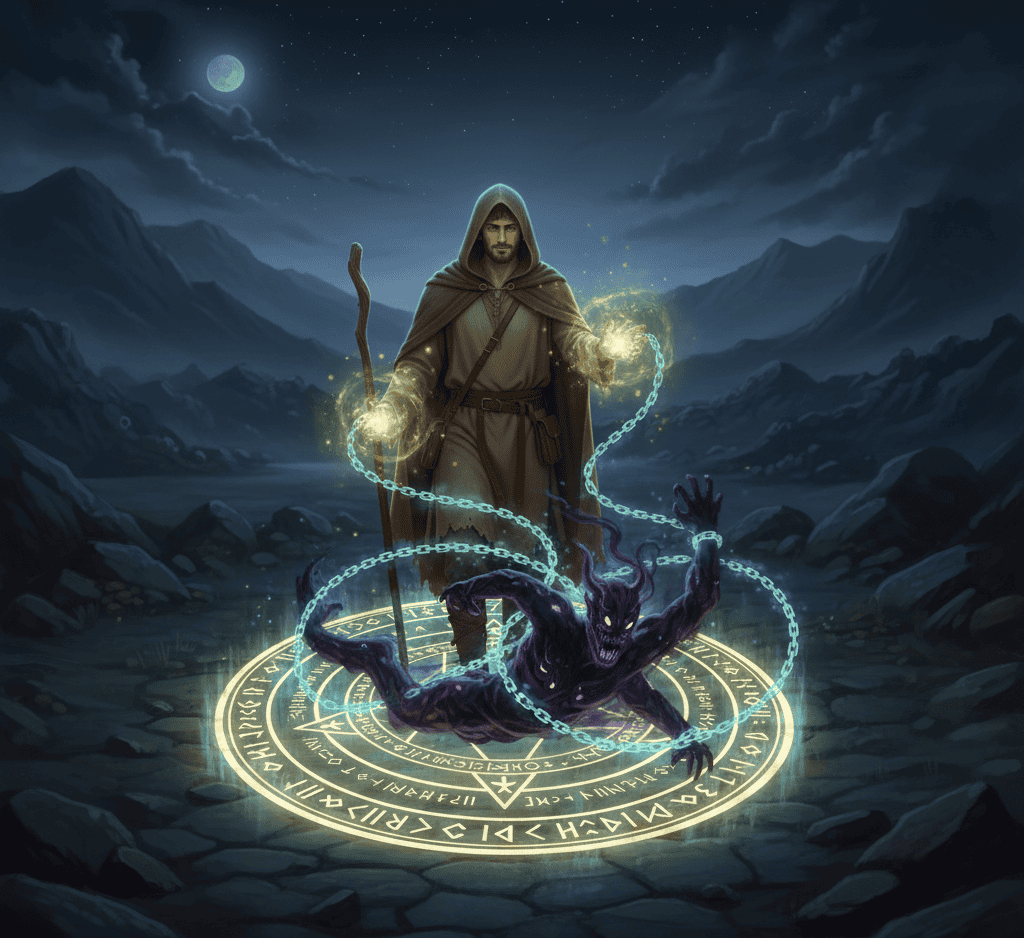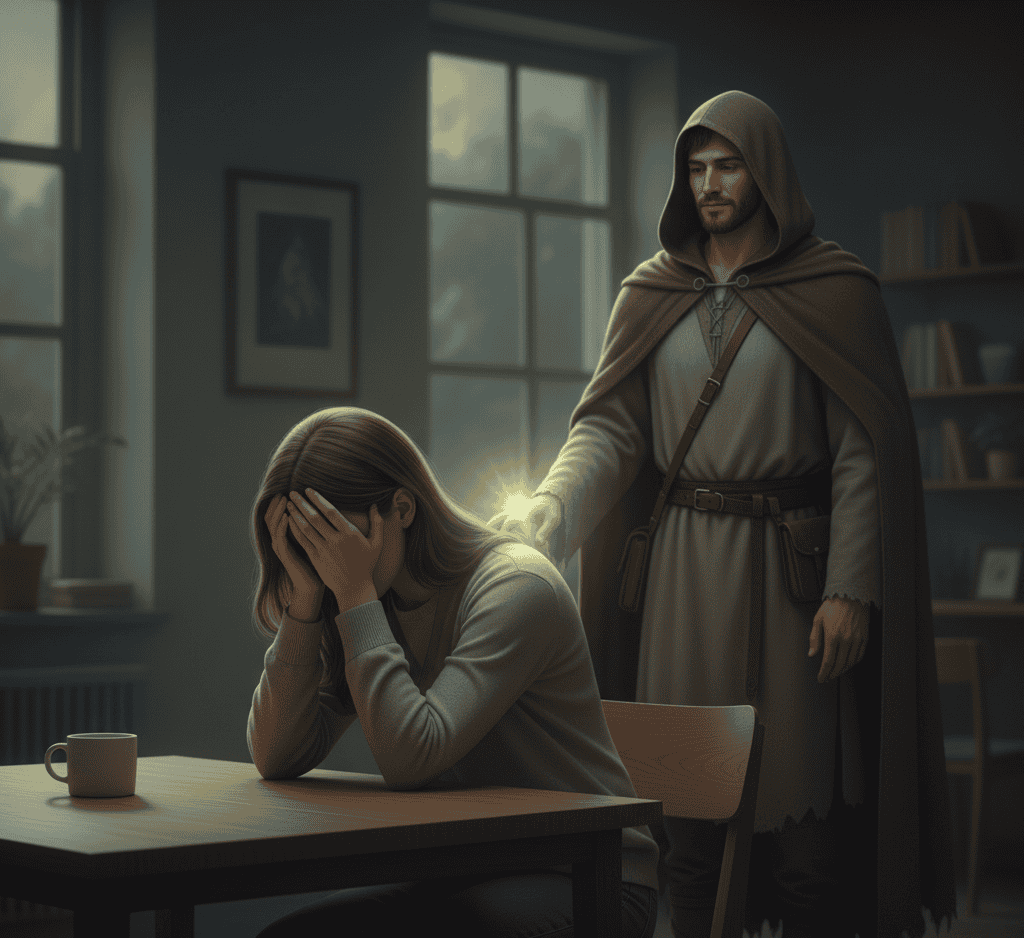Across many traditions, Raphael stands out as the gentle guide, the wandering healer, and the bringer of relief.
While other archangels carry weapons of fire or thunder, Raphael’s greatest power lies in restoring what has been broken.
But what many people do not know is that in several old stories, Raphael does more than heal.
He also binds dangerous spirits of illness, protects travelers from hidden forces, and confronts the unseen threats that cause suffering.
Today, we step into that world and explore how Raphael became one of the most beloved figures in celestial lore.
The Traveler with a Healing Touch
Raphael is often described as a traveler who walks among people in a simple disguise. He does not arrive with glowing wings or booming voices.
Instead, he appears humble and calm, ready to help anyone in need. This makes him one of the most human of all archangels.
His healing powers are not limited to miracles or sudden flashes of light. Many stories say he uses herbs, gentle words, and practical care.
One of the most famous tales features Raphael guiding a young man on a long and difficult journey. He acts like a friend rather than a mighty being.
Along the way, he gives advice, cures sickness, and warns about hidden dangers. This story shaped Raphael’s identity for centuries.
He became the figure people hoped would guide them safely through life’s challenges.
What makes Raphael unique is the warmth in his stories. There is no sense of judgment or fear.
He meets people as they are, helps them at their level, and encourages them to keep moving.
He is the kind of healer who treats the whole person, not just the wound. That human touch is why Raphael is still so popular today.
Spirits of Illness and the Hidden World of Suffering
Long before modern medicine existed, people tried to understand why illness happened. Many cultures believed sickness was caused by invisible spirits.
These forces were not always evil. Some were simply chaotic. Others brought harm without meaning to.
And a few were truly malicious. Raphael became known as the archangel who understood these hidden beings and knew how to deal with them.
In older traditions, certain illnesses were linked to specific spirits. Fever, nightmares, sudden weakness, or unexplained fear might be blamed on unseen hands.
Raphael’s role was to calm these forces or remove them from people entirely. Some stories even describe him catching these spirits and binding them so they could no longer harm others.
This gave Raphael a very special place in the heavenly order. He did not fight with fire or weapons.
He worked quietly, binding the causes of physical and emotional pain. This made him both a healer and a defender.
He stepped into battles most people did not even know were happening.
Even today, many people feel comforted by the idea of a guardian who sees the invisible struggles they face.
Whether the problem is sickness, stress, or sadness, Raphael symbolizes the gentle strength that lifts burdens we cannot always name.
Binding the Demon of Illness: A Tale of Courage
Among Raphael’s many stories, one stands out for its mix of danger and compassion. It tells of a powerful spirit that brought illness, fear, and death to many.
This spirit followed a young woman and caused suffering to anyone who tried to help her. People lived in fear because they could not escape the creature’s influence.
Raphael stepped in, not with force, but with wisdom. He instructed the young traveler he guided to catch a certain fish whose organs held protective power.
With Raphael’s guidance, they used this protection to trap the spirit. When the creature appeared, Raphael bound it so tightly that it could no longer harm the woman or anyone else.
This moment is important because it shows Raphael in a role many people do not expect. He becomes not only a healer but a guardian who faces darkness directly.
The binding of this illness spirit symbolizes the idea that suffering can be confronted, understood, and defeated. It is a powerful image of courage mixed with compassion.
The story also reminds us of Raphael’s balanced approach. He does not destroy the spirit. He restrains it.
This reflects an ancient belief that some chaotic forces must be controlled, not erased. Healing is often about restoring balance rather than winning battles.
Raphael’s Symbols and the Meaning Behind Them
Over time, Raphael gained several symbols that reflect his healing nature. The staff he carries is one of the most important.
It looks simple, but it represents guidance, support, and medicine. In many images, he also holds a small fish.
This object may seem unusual, but it comes from the old story where the fish helped protect against illness. It became a reminder that healing can come from unexpected places.
Another symbol is the green color often associated with Raphael. Green represents growth, recovery, and peace.
It is the color of fresh leaves, new beginnings, and the calm that follows a storm. Many people find comfort in imagining Raphael surrounded by this gentle glow.
These symbols make Raphael easy to recognize and relatable. Unlike fiery swords or thunderous trumpets, Raphael’s tools are soft, practical, and familiar.
They show that healing is not always dramatic. Sometimes it is quiet and steady. Sometimes it is a simple act of care. And sometimes it is the strength to keep going even when the road feels long.
Why Raphael Still Matters Today
Raphael’s stories may come from ancient times, but his message is more important than ever. Illness, fear, and emotional pain still affect people everywhere.
The idea of a gentle guide who brings comfort and binds the things that hurt us speaks to something deeply human.
Raphael reminds us that healing is not only about curing symptoms. It is about restoring hope, offering support, and helping people feel seen and understood.
In a world that often moves too fast, Raphael’s stories offer a soft place to rest. They remind us that strength does not always roar.
Sometimes it whispers. Sometimes it holds a hand. Sometimes it simply stays close during hard moments.
This is why Raphael continues to inspire art, stories, and spiritual practices. He stands for healing in all its forms.
He stands for protection without aggression. He stands for compassion that does not fade.
And he shows that even the strongest forces of illness or fear can be bound and overcome with patience, wisdom, and care.

私は生まれたときから、常に神との強いつながりを感じていた。作家として、また指導者として、私の使命は、人々が最も暗い時代に愛と幸福と内なる強さを見つけるのを助けることである。

